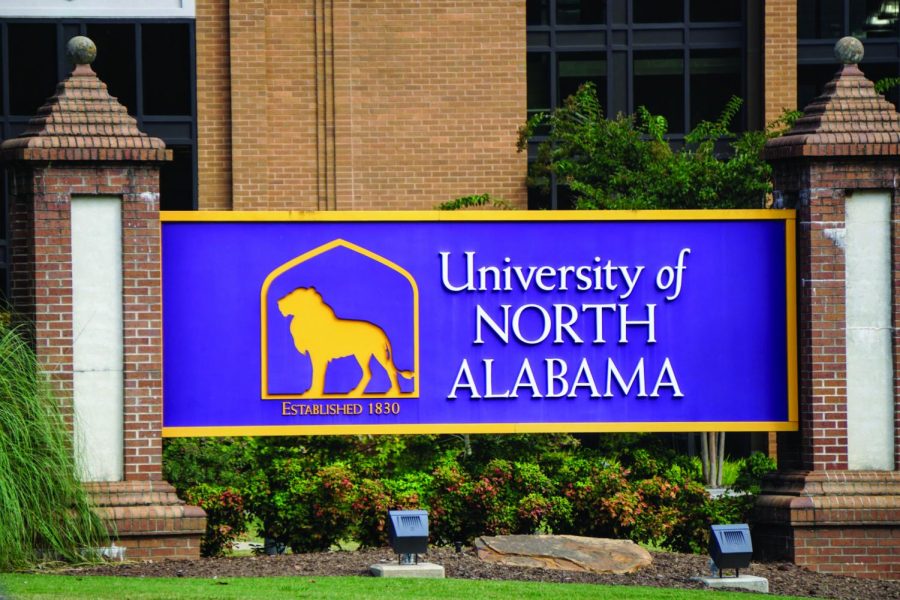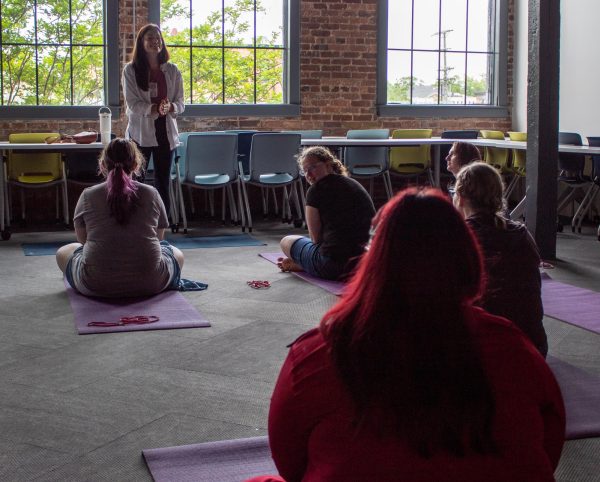The consequential scale: UNA under the pandemic
September 18, 2020
There’s an expected difficulty that comes with operating a public university under the burdens of a global pandemic. Suddenly, the everyday actions of students, staff and faculty (on and off campus) all contribute to the overall future of the institution and the lives that support it.
With the first week of the Fall semester completed, the University of North Alabama is looking for ways to continue its fight against the pandemic as it pleads to keep the doors open for students. The road to get to this point hasn’t been easy. Scales needed to be balanced and decisions made.
Many of these decisions have been made by the university’s own Covid-19 Recovery Task Force (CRTF), founded by President Kenneth Kitts and headed by the Vice President of Student Affairs, Dr. Kimberly A. Greenway. Along with 27 other members from a diverse representation of many university departments, the CRTF is responsible for assessing the strategy for a safe, face-to-face campus environment in the midst of the pandemic.
Greenway says the foundational strategies to have an open campus this Fall are all based upon the Center for Disease Control and Alabama Department of Public Health’s own guidelines,
“The undergirding plan of the entire plan is CDC and ADPH regulations and… how we implemented those in a higher education environment,” Greenway explained.
As the virus has evolved, so have the guidelines and in turn, so have the decisions made by UNA’s CRTF. Greenway says that although the implemented guidelines have been majorly successful and are being followed on-campus; off-campus student activities have created much of the problems within the first week,
“The biggest challenge we have right now is helping students… and our entire community understand that their behaviors and actions off-campus can risk behaviors on-campus,” Greenway said. “[They] will be the ones to decide whether or not [the university remains open].”
Despite this, Greenway says the assurance the administration has had since the beginning is still pushing them forward now,
“We would not have brought students back had we not had great hopes and confidence that we could keep students safe,” Greenway said. “[The] group of people on the task force work tirelessly, hours and hours… to put together a plan that would mitigate the risks so we could remain open and offer students the [university] experience.”
Correctly accounting for positive cases and those exposed is another challenge facing the university. In early August, UNA detached data from their website that was displaying the university’s coronavirus cases because of the fear of inaccurate numbers. On Aug. 26, the CRTF released information on plans for an updated system for reliable data-driven information on UNA’s covid cases.
This new ‘data dashboard’ will be built and supported by the University Communications and Marketing team. With plans for its release to be in the coming weeks.
In the meantime, the CRTF has endorsed the creation of the GuideSafe App for the helping of contact tracing. The app, which has the technology to track and notify the user of potential exposure warnings, which the university hopes will become heavily used by students, staff and faculty alike.
A major safety feature of the app is its lack of GPS technology to tract users. Instead, the application uses Bluetooth scanning and can’t be used to approximate a device’s location. If a user tests positive of Covid-19, the user can choose to send out an anonymous notification to other users of the app they may come into close contact with.
Greenway expressed her uncertainties if the university was forced to move to a remote-learning only environment if the conditions of the pandemic worsened in the coming weeks,
“Any parameter that is a positive thing on a university campus would be negatively impacted [if UNA was forced to close],” Greenway explained. “Students really enjoy the college experience, but those of us who work in this environment, it’s what we give our lives to.”
The decision to reopen for the Fall semester has come with its own set of consequences as the university preforms an administrational balancing act. In one hand, the safety and health of students, staff and faculty; in the other hand, the higher educational platform and its own responsibilities. All of this is built upon the physical, emotional and financial tolls that the pandemic has brought. Although it has been difficult, President Kenneth Kitts says that this scale is not skewed.
At the center of the university’s financial tolls is Project 208. Started in 2017 by President Kitts, Project 208 is UNA’s effort to have their voice heard in Montgomery and is a major step towards gaining in the budgetary gap that the university has faced throughout its history.
At the beginning of 2020, Kitts said it finally felt as though their voice was being heard in the state’s capitol as they were promised a 15% budget increase for the year. A 15% increase translates to 5 million new dollars for the school and was a great encourager that UNA would finally be getting her fair share from Montgomery.
Covid-19 had other plans.
“We were very hopeful and had actually felt like our voice was being heard finally,” Kitts said. “By May, we could tell that our budget increase was going to be much leaner.”
The original $5 million increase was cut to just $1.7 million in May. Although disappointing, Kitts remains confident that the voice of UNA will continue to be heard into the coming years and that Project 208 will not be adjourned,
“It’s disappointing, but again that’s $1.7 million dollars that we didn’t have before; it’s still an increase,” Kitts explained. “As long as I’m here, Project 208 will be a major part of what this university stands for… it’s just what the students deserve.”
On Aug. 27, Gov. Kay Ivey announced that Alabama’s Safer at Home order will be extended until Oct. 2 at 5p.m. With this, Kitts says the university’s guidelines will follow suit and remain intact until at least that date as well.
As the University of North Alabama pushes forward into coming weeks, the confidence of the administrative staff will be tested solely on the participation of the given guidelines by the student body.
Both Dr. Greenway and President Kitts remain assured that UNA is up for the task and that with the community’s support, this university can be a positive influence on other universities around the state,
“Every trend has improved… since the first week that face coverings were required in the state of Alabama,” Greenway said. “That’s an indicator to me that if people will follow the guidance, we have a really good chance of remaining open.”











